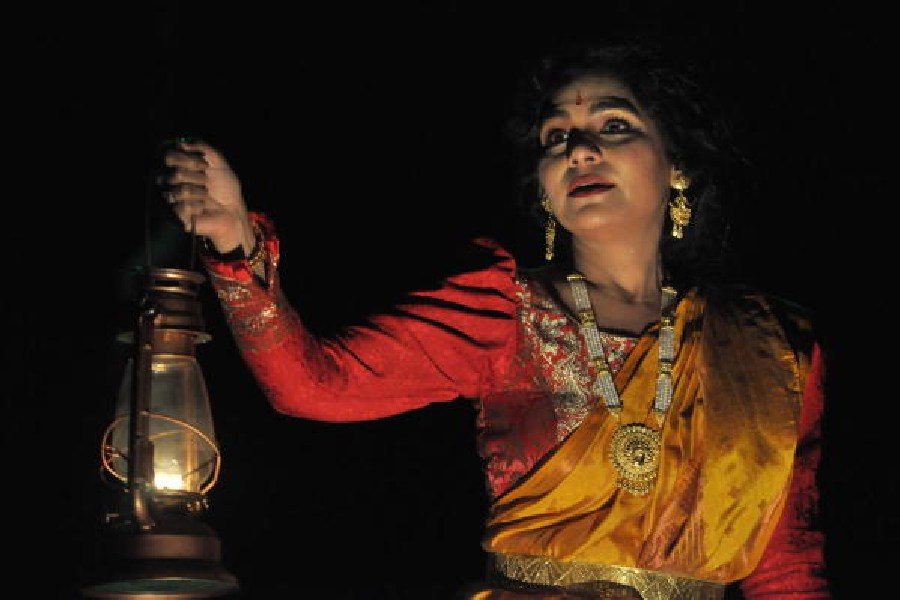The Flower of the Native Stage. This was the title given to Nati Binodini by the media in 19th-century Bengal. The origin of Sadharon Rangaloy, as the public theatre was called, may be traced to the impact of the theatrical activities of the English in Calcutta. As the term Sadharon Rangaloy suggests the new theatre was to be set up in contrast, if not in actual opposition to the exclusive theatre clubs of the upper classes.
The arrival of the British bourgeoisie in Bengal meant the introduction of new commercial and administrative relations, accompanied by the prevalent values of the 19th-century capitalist system.
Jealousy over prostitutes among Bengali aristocrats and bhodrolok which quite often led to the act of violence against these women could have reflected the macho instinct of holding on to the much sought-after prostitute as a trophy and resenting violently the trophy’s choice of another man.
When Kumar Bahadur, a young jealous lover was about to kill Binodini with his sword, an alert Binodini held him by his hand and reminded him of his respectable bhodrolok family background and the scandal that could blemish his family reputation if he was hanged for murdering a prostitute. She did not weep or make pathetic appeals to him to spare her as one would have normally expected from a threatened woman in that circumstance. It was her experiences with the bhodrolok lovers and her accumulated knowledge about the chink in their armour that emboldened her.
Abanti Chakraborty, as a director, has always dealt with female sexuality in the most productive way. Her method is a rare combination of lunatism and art. The spirit of the term “opera” was very innocently knitted in Binodini Opera and it is quite evident that she doesn’t want this production to be termed as over-designed. She wanted to keep intact the lyrical elements of a tragedy.
I guess this was one of the main reasons to cast Sudipta Chakraborty in the title role. It is only Sudipta who has the ability to connect lyricism with style or let’s say she made us believe as Binodini that we always must bear in mind that this problem of style is intimately related to the problems of action, of conflict, and of tragic relief.
The conception of Renascence virtu battling onwards to success and then falling unconquered before fate gave to Binodini Opera a theme of greatness and strength which was never seen in Abanti’s earlier plays.
Incredible actors like Tathagata Choudhury as Amritalal Basu, Padmanabha Dasgupta as Kumar Bahadur, Biswajit Das as Ranga Babu, Sujan Neel Mukhopadhyay as Gurmukh Rai, and Abhijit Guja as Girish Chandra Ghosh have taken the concept of tragedy as falling from prosperity into misery and wretchedness.
Another precious takeaway from the production is the magnificent and gigantic performances of Indudipa Sinha, Sweta Bagchi, Bidisha Chakraborty, Doyel Nandi and Sarbani Bhattacharyya. Indudipa should and must work more and more so that we don’t miss her magic much.
Sudipta in the truest sense knows that to acknowledge the self-activity of a class is to go beneath or beyond the stage of seeing any social group as objects of a setup of self-regulating, solely external processes.
Binodini Opera will remain Abanti Chakraborty’s one of the best ever, not in terms of style, design and sexuality but on innocence, and being aspirational and rooted.
Picture: Anshuman Bhowmick










